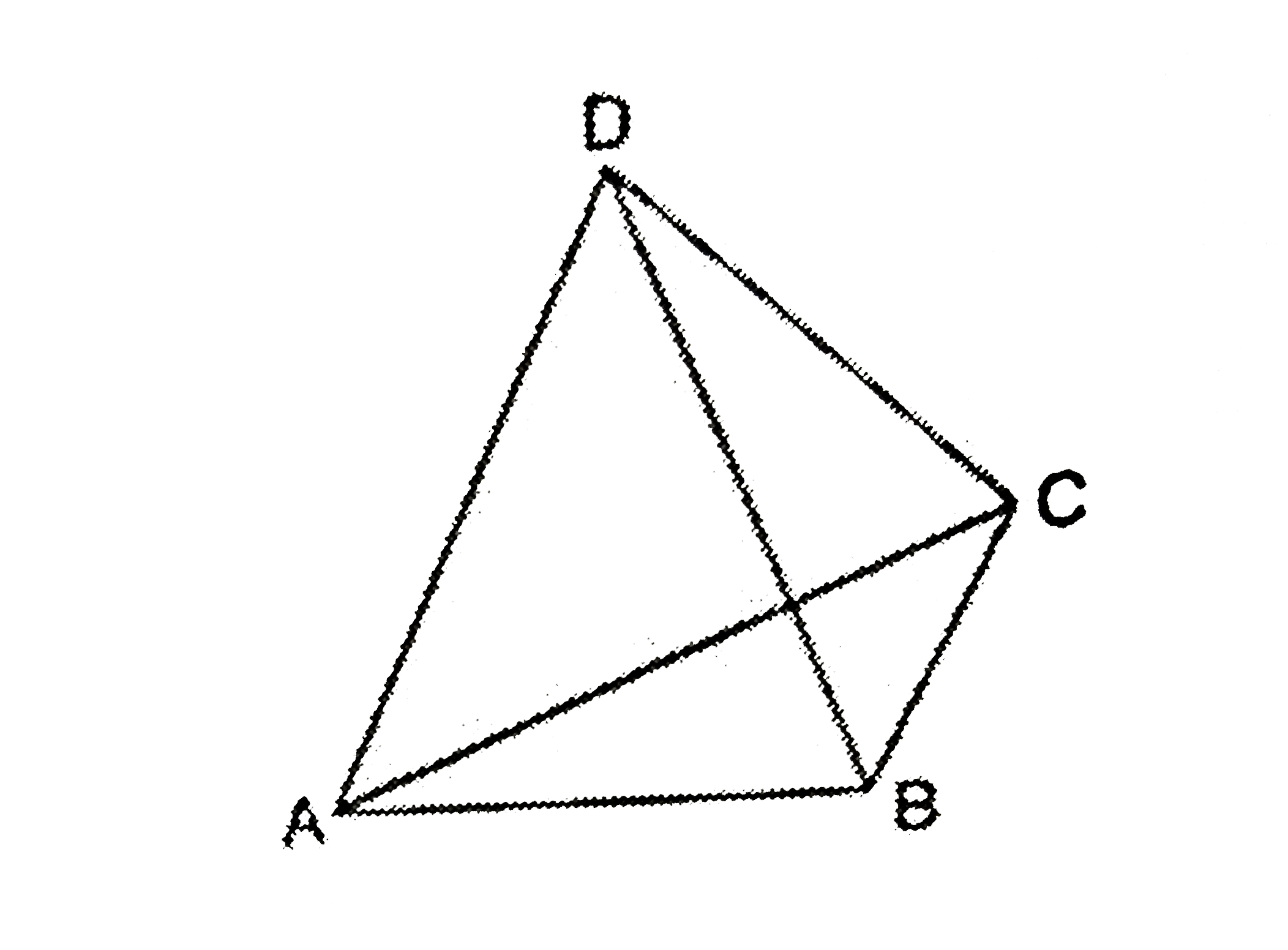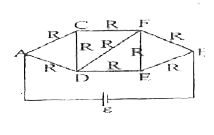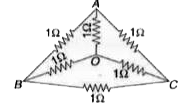
Six identical wires of resistance R each are joined to form a pyramid, as shown in the figure above
The equivalent resistance between any two corners will depend on the choice of corners
The equivalent resistance between A and B is R/2
The equivalent resistance between D and C is zero
If an electric current enters at A and flows out at B, no current will pass through DC.
The correct Answer is:B, D
Step by step video, text & image solution for Six identical wires of resistance R each are joined to form a pyramid, as shown in the figure above by Physics experts to help you in doubts & scoring excellent marks in Class 12 exams.
Updated on:21/07/2023Topper's Solved these Questions
Similar Questions

Tweve identical resistance each of resistance R are joined to form a cube as shown in figure.
Find resistance of the combination across AB
View SolutionTwelve identical wires each of resistance 6Ω are joined to from a skeleton cube. Find the resistance between the current of the same edge of the cube
View Solution
Knowledge Check
Two identical thin uniform rods of length L each are joined to form T shape as shown in the figure. The distance of centre of mass from D is
 A0BL/4C3L/4DL
A0BL/4C3L/4DLFive identical resistors each of resistance 1Ω are initially arranged as shown in the figure by clear lines. If two resistances are added as shown by the dashed lines then change in resistance in final and initial arrangement is
 A2ΩB1ΩC3ΩD4Ω
A2ΩB1ΩC3ΩD4ΩA frame is formed by nine identical wires of resistances R each as shown in the figure.

The equivalent resistance between A and B isA511RB111RC1511RD611R
Nine wires each of resistance r=5Ω are connected to make a prism as shown in the figure.Find the equivalent resistance of the arrangement across AB(in Ω)
View SolutionSix equal resistances each of 4 ohm are connected to form a net work as shown in figure
 .
.
What is the resistance between A and B ?
View SolutionA frame is formed by nine identical wires of resistances R each as shown in the figure.

Choose the incorrect statement.
View SolutionSix equal resistances, each 1Ω, are joined to form a network as shown in fig. Then the resistance between any two corners is

View SolutionSix equal resistances, each 1Ω, are joined to form a network as showing figure Then the resistance between any two corners is

View Solution

